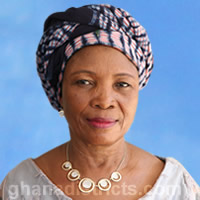Human Resource Development And Basic Services
Bole secondary School is the only senior secondary school in the District. Student population during the period under review stood at 673-There are 23 pre-school educational facilities, 45 primary schools, 15 Junior Secondary schools and 2 Vocational institutes. Almost all the schools are government-owned except 2 pre-schools 1 primary school and 1 vocational institute in Bamboi.
Education Performance at Kindergarten Level
1.It has been observed that, GER, MGER and FGER has increased tremendously from 2003/04- 2004/05 (33.3%-80.2%) given a difference of 46.9%.
2. FGER equally increased from 32.5% to 81.0% in 2004/05 indicating a difference of 48.5%
3. GPI also increased from 0.96% to 1.0% in 2003/04-2004/05
4.Due to the creation of the Sawla-Tuna-Kalba District, gross enrolment has reduced to 46.2%
5.This high performance of enrolment is due to the introduction of the Capitation Grant and the abolishing of the payment of school fees.
6.In terms of quality in the KGs teacher population is woefully inadequate
7. PTR in 2003/04 is 90:1 instead of the national pupil to teacher of 25:1 whilst in 2004/05PTR rose tremendously to 257:1.This is due to the high enrollment Despite the creation of STK District. PTR in 2005/06 is still as high as 84:1
8. In the KG despite the shortage of teachers, only 15.8% in 2003/04, 8.8% in 2004/05 are trained whilst as high as 91.2% are untrained.
9. On infrastructural development, only 26 out of 45 primary schools have KGs attached. This represents 57.8% of primary schools with KGs attached.
Educational Performance at Primary Level
•Progress was made in Drop-Out rate from Primary to JSS 2003 2004 2005
Transition 113 Absolute figs
•Boys 64
•Girls 49
•Total 113
Pupil-Teacher ratio at Primary Level:
At the primary level, it is about 30% below the national ratio.
Primary Level 03/04 04/05 05/06
Pupil-Teacher ratio 16:1 35:1 49:1
For years 2004/2005 and 2005/2006 it had been 35:1 and 49:1 as against the national ratio of 25:1
Absolute Figure 03/04 04/05 05/06
Trained Teachers 194 124 83
Untrained Teachers 129 331 247
GENDER AND GROSS ENROLLMENT RATE
PERFORMANCE AT THE PRIMARY LEVEL
Gender and Gross Enrollment
1. It is clear that GER, FGER and MGER are even worse than the primary. With GER of 16.1 and 16.8 in 2003 and 2004 respectively.
2. More of the pupil’s dropout of school before JSS level.
3. Comparing MGER and FGER there is a big gap between male and female enrolment. (29.3% as against 13.5%) Causes may be due to early marriages, teenage pregnancies, desire for worldly gains and other cultural practices. In terms of quality, PTR is not encouraging as well at the JSS level. In 2003/04 PTR stood at 1:56, 1:60 in 2004/05 and 1:67 in 2005/06 comparing this to the national PTR of l:25
4. Percentage of trained teachers at the JSS level is Encouraging as compared to the other levels
5. In 2003/04 78% of the teachers were trained while 69.0% were trained teachers in 2005/06
6. Physically, 1 out of 15, and also 5 out of 53 classrooms representing 33.3% have toilet facilities. JSS in 2005/06 has a workshop.
Bece Performance.
The situation was appalling.
2003 2004 2005
Aggregate.: 30 70.5 67.3 48.4
Absolute figs
• Boys 154 173 155
• Girls 75 82 55
• Total 229 257 210
Possible Reasons
The following could be some of the reasons for the poor performance.
•Increasing work load of the girl child
•Quality of teaching staff
•Poor supervision
•Inadequate Teaching and Learning Materials
Poor performance of the Girl Child. May be at the JSS level, the girl child begins performing the multiple domestic roles such as fetching water, cooking, washing, sweeping and cleaning just to mention a few .These activities limit time for academic work.
Actions to address the situation include;
Provision of means of transport (Bicycles) for the girl child through UNICEF support. These could be used to fetch water and quickly get to school and get back home early to perform domestic roles. Teaching Staff Strength Pupil-Teacher ratio at JSS Level
Whilst the pupil-teacher ratio is below the national ratio at the Primary level, it appears very high at the JSS level.
Pupil-Teacher ratio at JSS Level
Pupil-Teacher ratio 2003/04 2004/05 2005/06
56:1 60:1 67:1
•The ratio is higher than the national ratio of 36:1.
•For the three years it has been between 56-67 pupils to a teacher.
That is about 46% higher than the national ratio
Absolute Figures 02/03 03/04 04/05 05/06
Trained Teachers 60 59 104 130
Untrained Teachers 23 29 24 18
1.On quality, PTR is not encouraging at this level (1:56, 1:60 and l:67) as compared to the National PTR of l:25
2. Percentage of trained teachers is quite encouraging as compared to the primary (78% in 2003/04 and 69.0% in 2005/06
3. During the period of the review, it was realized that, l out of the 15 JSS in 2005/06 has a workshop and out of the 53 classrooms as many as 42 representing 79.2% need repairs
4. Also only 5 out of 15 schools representing 33.3% has Toilet facilities in 2005/06 Apart from teacher sponsorship, there are other interventions in education aimed at creating an enabling environment for quality education delivery. These are:
5. Construction of school blocks,
6. Provision of furniture,
7. Teacher accommodation
8. An office block for the District Directorate of Education
9. A school feeding programme attracts and retains pupils in school
10. Best Teacher’s Award
Receipts & Expenditure on Education
•Inflows of resources to education sector were encouraging during the period under review.
•Inflows ranged from below 6 billion to 8 billion and expenditure from below 7 billion to 08 billion. The above analysis portray that the education sector seems to have suffered a slump in 2004 for all the indicators: Enrollment, Teacher population, Transition rates and even finances.
Some actions earmarked for 2006-2009
1. Continuation of educational infrastructure provision
2. Sponsorship of teacher trainees
3. Promotion of both formal education and functional literacy with much emphasis on female education.
4. Incentive packages to attract and retain teachers
5. A critical attention on quality of teachers at the Primary level
Date Created : 11/15/2017 3:02:16 AM





 facebook
facebook twitter
twitter Youtube
Youtube TOLL FREE 0800 430 430
TOLL FREE 0800 430 430 +233 593 831 280
+233 593 831 280 GPS: GE-231-4383
GPS: GE-231-4383 info@ghanadistricts.com
info@ghanadistricts.com Box GP1044, Accra, Ghana
Box GP1044, Accra, Ghana